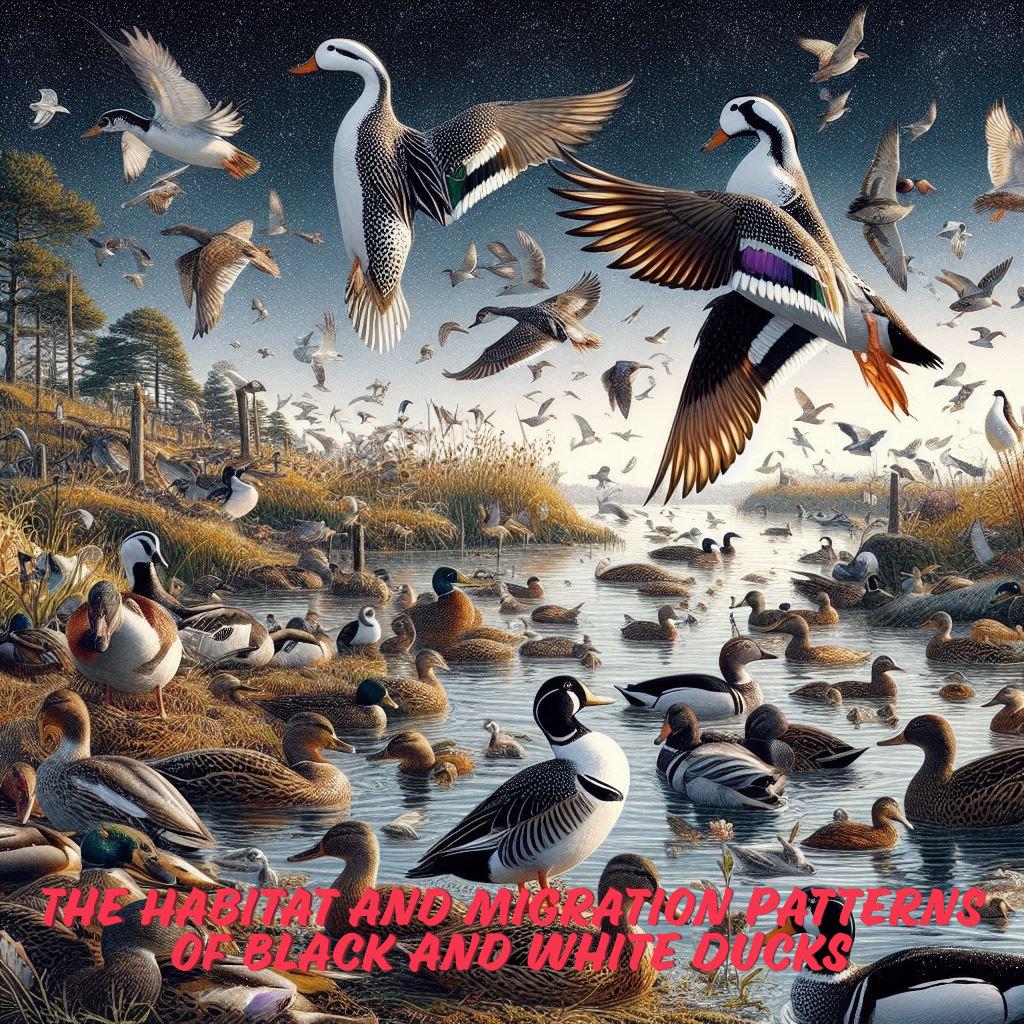Introduction to Black and White Ducks
When you think of ducks, vibrant colors and diverse patterns might come to mind. Among these fascinating birds, the black and white duck stands out with its striking appearance and intriguing behaviors. These ducks captivate birdwatchers and nature enthusiasts alike. Whether gliding across serene lakes or dabbling in wetlands, their presence is often a delightful surprise.
But what makes black and white ducks so unique? Understanding their habitat preferences and migration patterns can shed light on their role within ecosystems. As we delve deeper into the world of these captivating waterfowl, we’ll explore where they thrive, how they travel seasonally, and the conservation efforts aimed at protecting them. Join us as we uncover the remarkable life of black and white ducks!
Differences in Habitat Preferences between Black and White Ducks
Black ducks tend to thrive in freshwater environments like marshes, ponds, and lakes. They prefer areas with dense vegetation that provide ample cover and food sources. These habitats are vital for nesting and raising their young.
On the other hand, white ducks show a preference for more open waters such as estuaries or coastal regions. Their adaptability allows them to forage in both saltwater and freshwater settings, making them versatile in their habitat choices.
Temperature is another factor influencing these preferences. Black ducks often favor cooler climates where they can find plentiful resources during migration periods. In contrast, white ducks may migrate further south seeking warmer weather during colder months.
These distinct habitat choices not only shape their feeding habits but also influence their behaviors throughout the year. Understanding these differences helps conservationists tailor efforts specific to each species’ needs.
Migration Patterns of Black Ducks
Black ducks are known for their remarkable migration behavior. They typically migrate in response to seasonal changes and food availability. These birds often travel along established flyways, using the same routes year after year.
In North America, black ducks usually breed in the northeastern regions during spring. As winter approaches, they shift southward towards warmer climates, favoring wetlands and coastal areas. Their journey can cover hundreds of miles.
During migration, these ducks tend to gather in large flocks. This social aspect aids in navigation and safety from predators. Observers may find them resting on lakes or marshes before continuing their journey.
The timing of their migration can vary each season based on weather patterns and environmental conditions. Understanding these nuances helps researchers track population dynamics and habitat needs effectively.
Migration Patterns of White Ducks
White ducks, particularly the domesticated breeds, exhibit diverse migration patterns depending on their environment and human influence. Unlike their wild counterparts, domestic white ducks may not migrate extensively. They often remain in areas where they are raised.
Wild white ducks, such as the northern pintail or the common eider, have defined migratory routes. These birds typically travel from breeding grounds in northern regions to winter habitats further south.
During this journey, they rely on water bodies for rest and feeding. Coastal wetlands are especially important since they provide ample food resources and safe resting spots.
Climate change is affecting these patterns too. Altered weather conditions can disrupt their usual pathways and timing of migrations.
Understanding these behaviors helps conservationists protect vital habitats along migration routes essential for sustaining healthy populations of white ducks.
Factors Affecting the Migration of Black and White Ducks
Migration of black and white ducks is influenced by various factors. Weather conditions play a crucial role. Harsh winters can drive these birds to migrate earlier in search of milder climates.
Food availability is another significant factor. As lakes and ponds freeze, access to food becomes limited, prompting these ducks to move toward areas with open water and plentiful resources.
Habitat destruction also impacts their migration patterns. Urban development or agricultural expansion can disrupt traditional routes, forcing them to adapt quickly.
Human activity cannot be overlooked either. Hunting seasons dictate movement as well; the presence of hunters may push them away from certain regions during peak migration times.
Climate change poses a long-term threat by altering migratory cues that ducks rely on for timely travel between breeding and wintering grounds. These interconnected elements shape the journey of black and white ducks each year.
Conservation Efforts for Black and White Ducks
Conservation efforts for black and white ducks are crucial in preserving their populations. Organizations like Ducks Unlimited focus on wetland restoration, ensuring these birds have safe breeding grounds.
Community engagement plays a significant role as well. Local initiatives often involve educating the public about habitat protection. This awareness helps reduce human impact on vital ecosystems.
Research is another key aspect of conservation. Scientists monitor migration patterns and population health to understand threats better. Data collected can inform policies that support sustainable practices.
Moreover, partnerships with governments enhance protective measures for these species. Legislation aimed at safeguarding wetlands has been implemented in various regions, providing essential habitats.
Every effort counts in maintaining the balance within ecosystems where black and white ducks thrive. Engaging diverse stakeholders fosters a collaborative approach to protecting these remarkable waterfowl and their environments.
Conclusion
The presence of black and white ducks adds unique beauty to various ecosystems. Understanding their habitat preferences is crucial for conservation efforts. Black ducks often thrive in marshlands, while their white counterparts prefer more open water bodies.
Migration patterns reveal fascinating behaviors. Black ducks tend to migrate shorter distances compared to white ducks, which can travel vast expanses during seasonal changes. Factors like climate change, food availability, and human activity significantly impact these migratory routes.
Conservation initiatives are essential for ensuring the survival of both species. Protecting wetlands and advocating for sustainable practices will benefit not only black and white ducks but the entire ecosystem they inhabit.
Appreciating these remarkable birds enriches our understanding of wildlife diversity. The journey of black and white ducks serves as a reminder of nature’s intricate balance and the importance of preserving it for future generations.

Leave a Reply